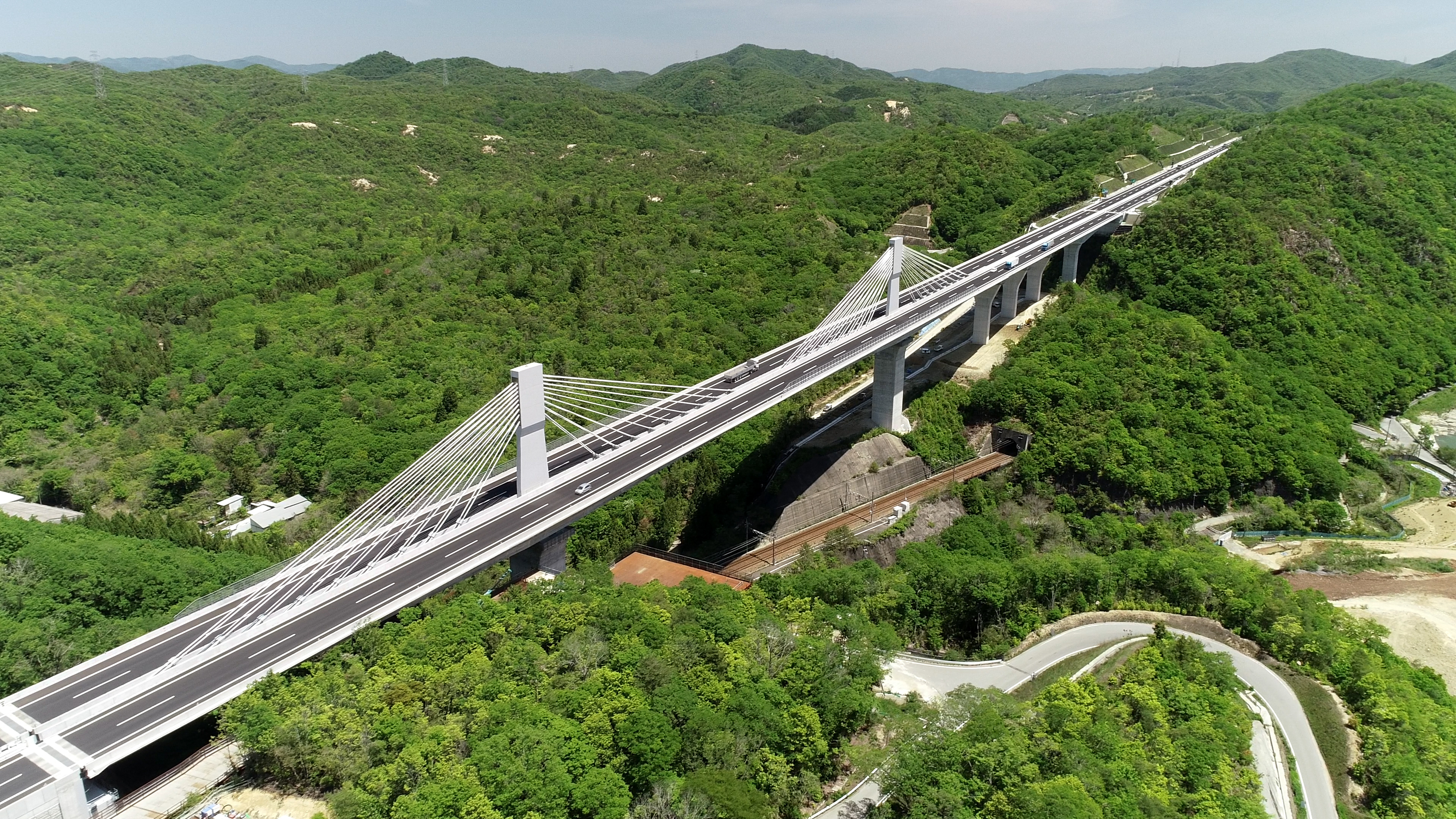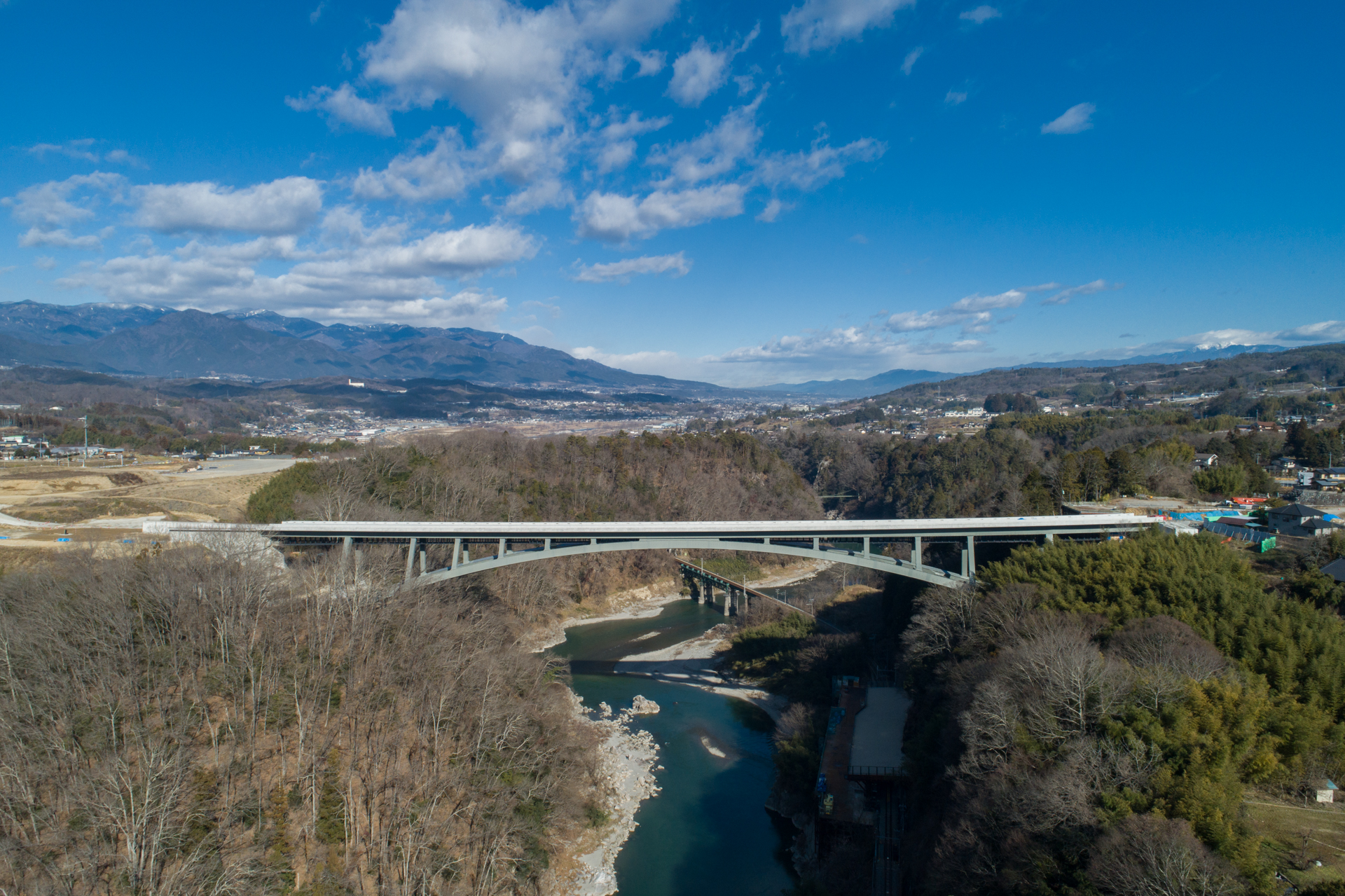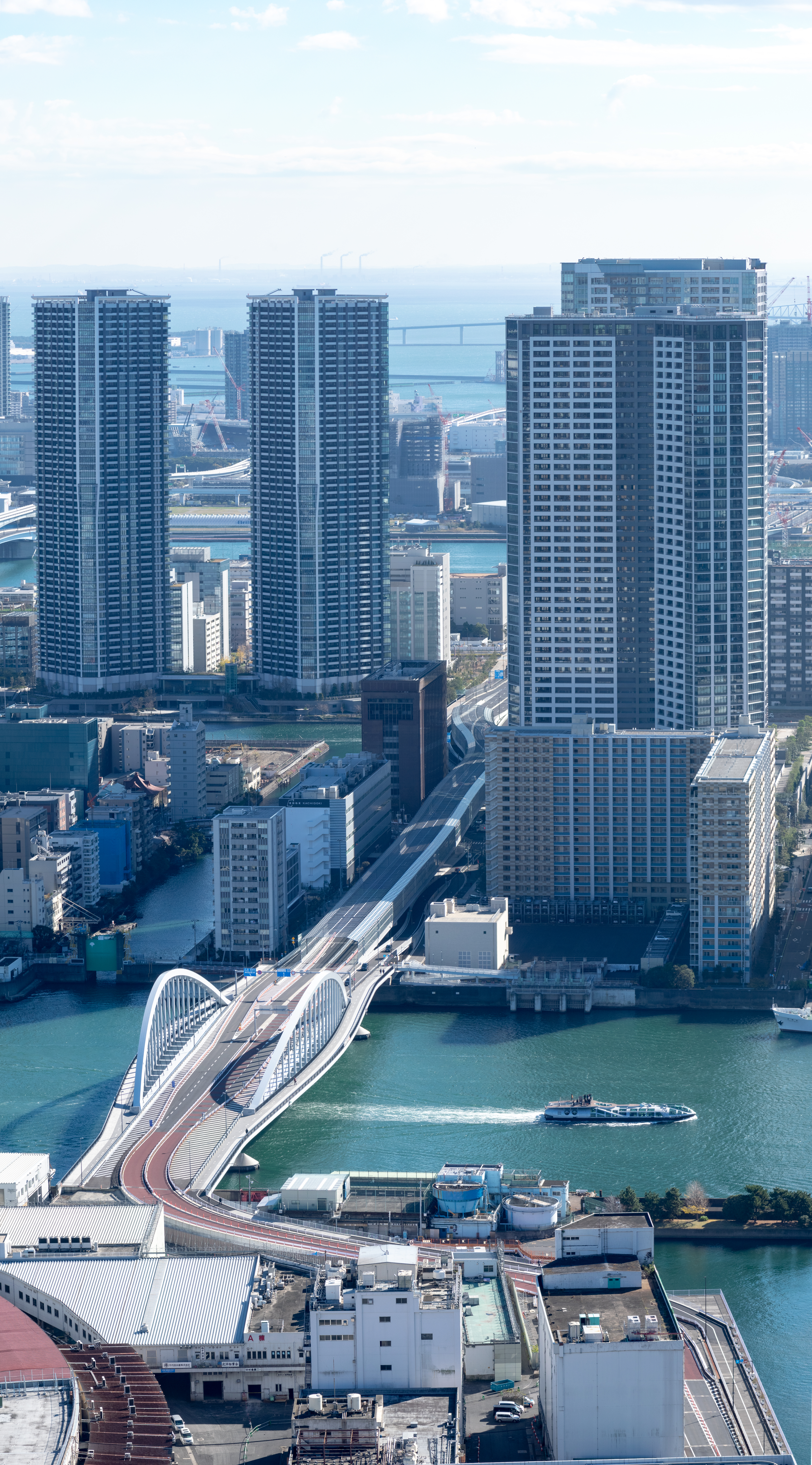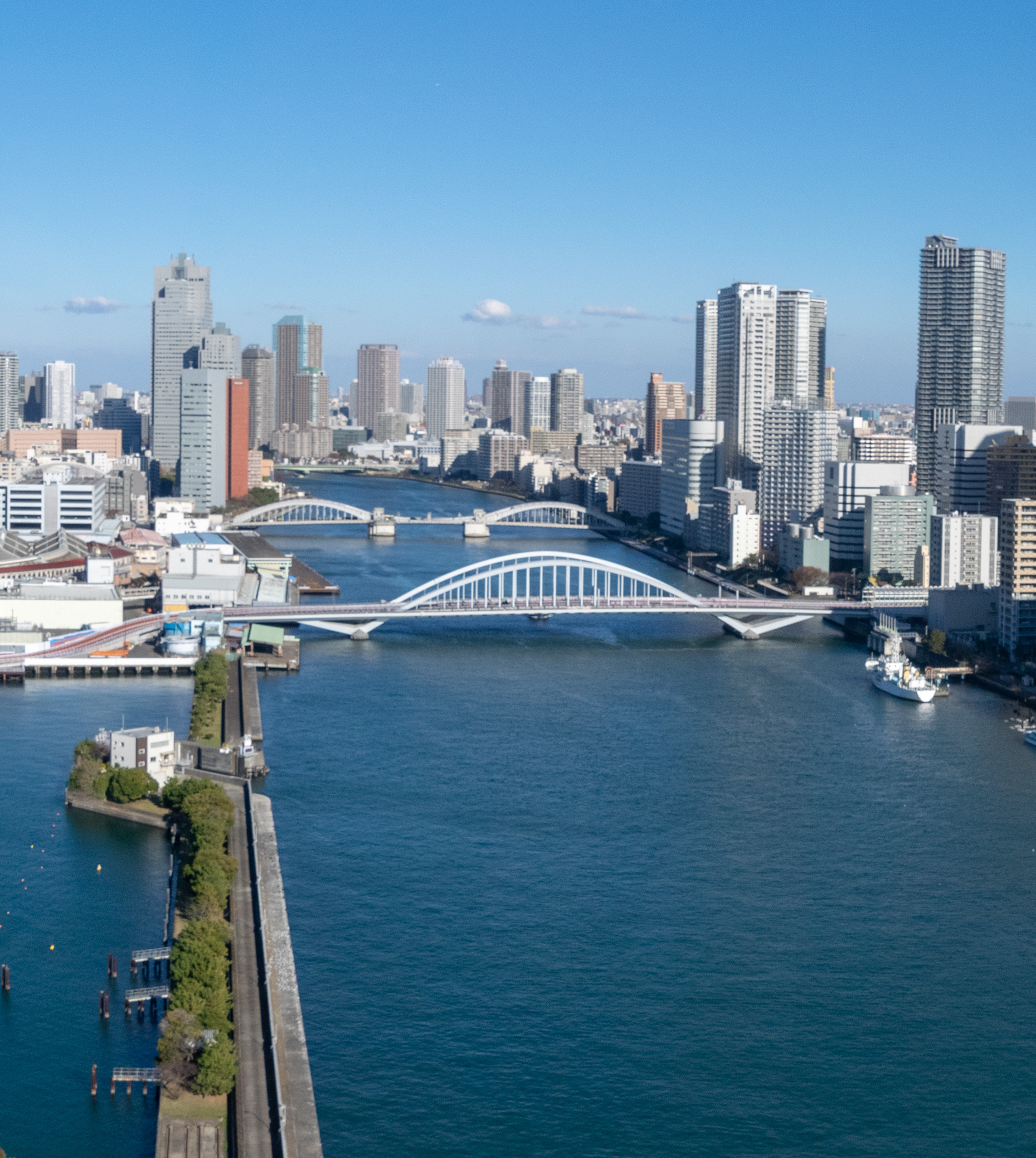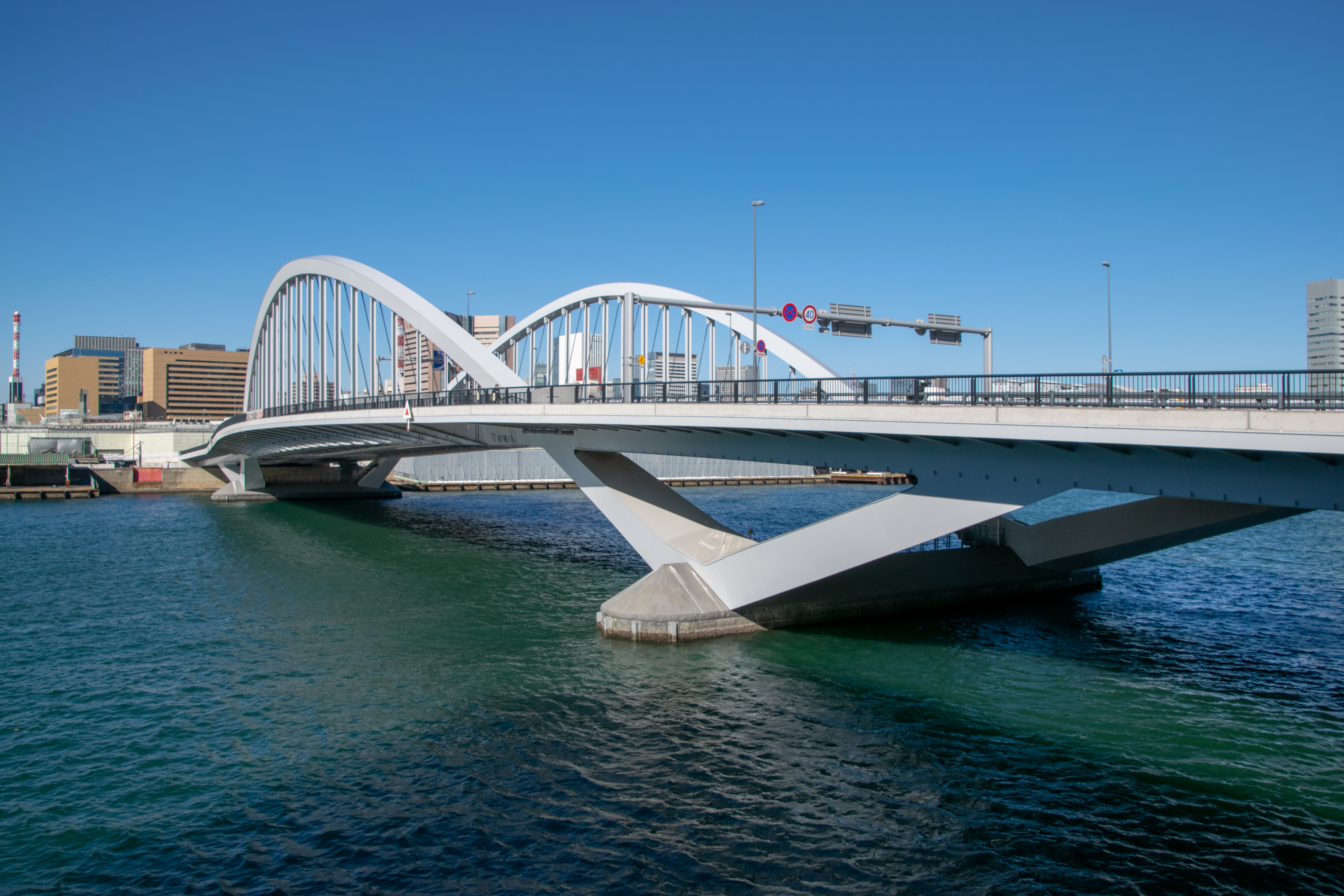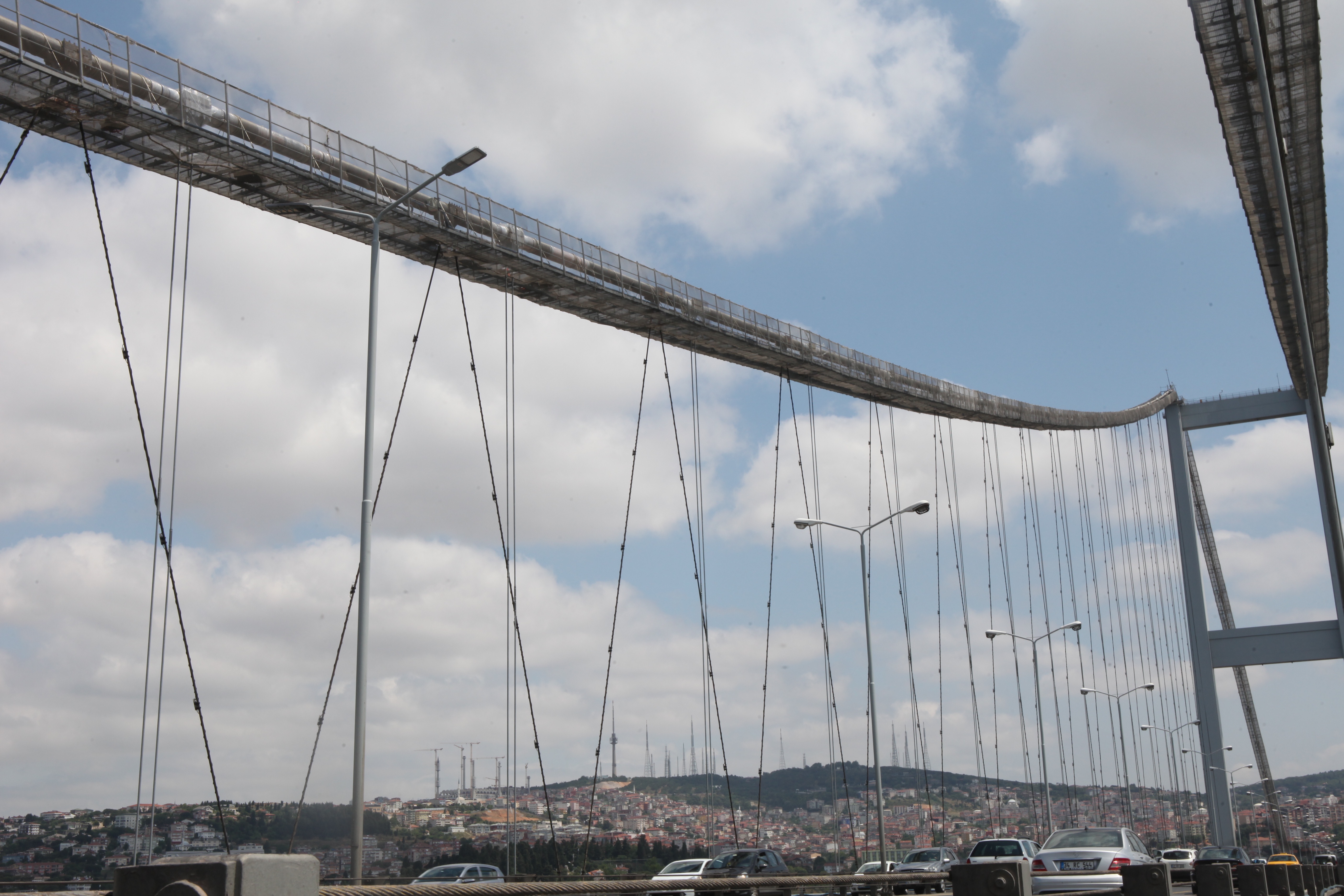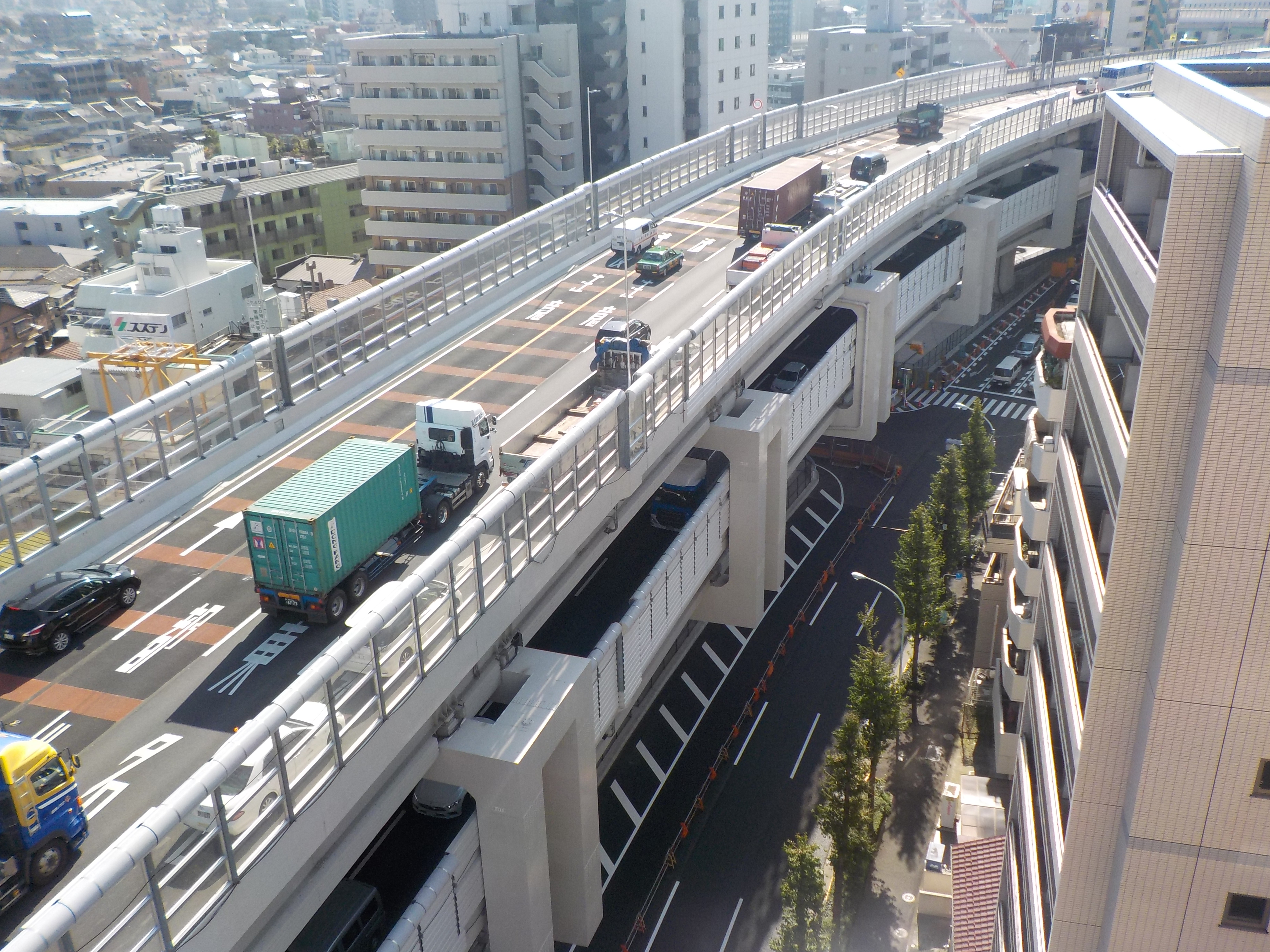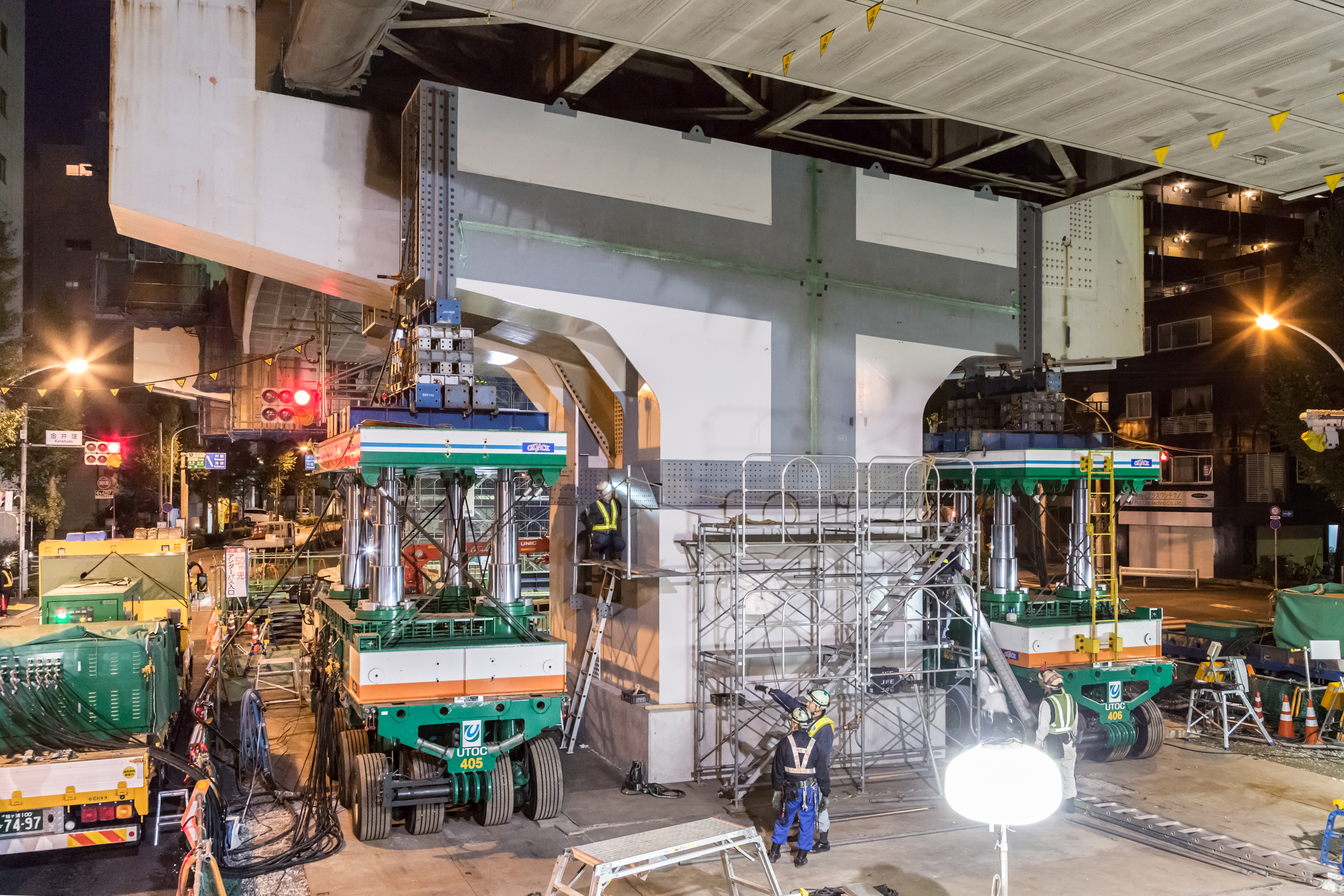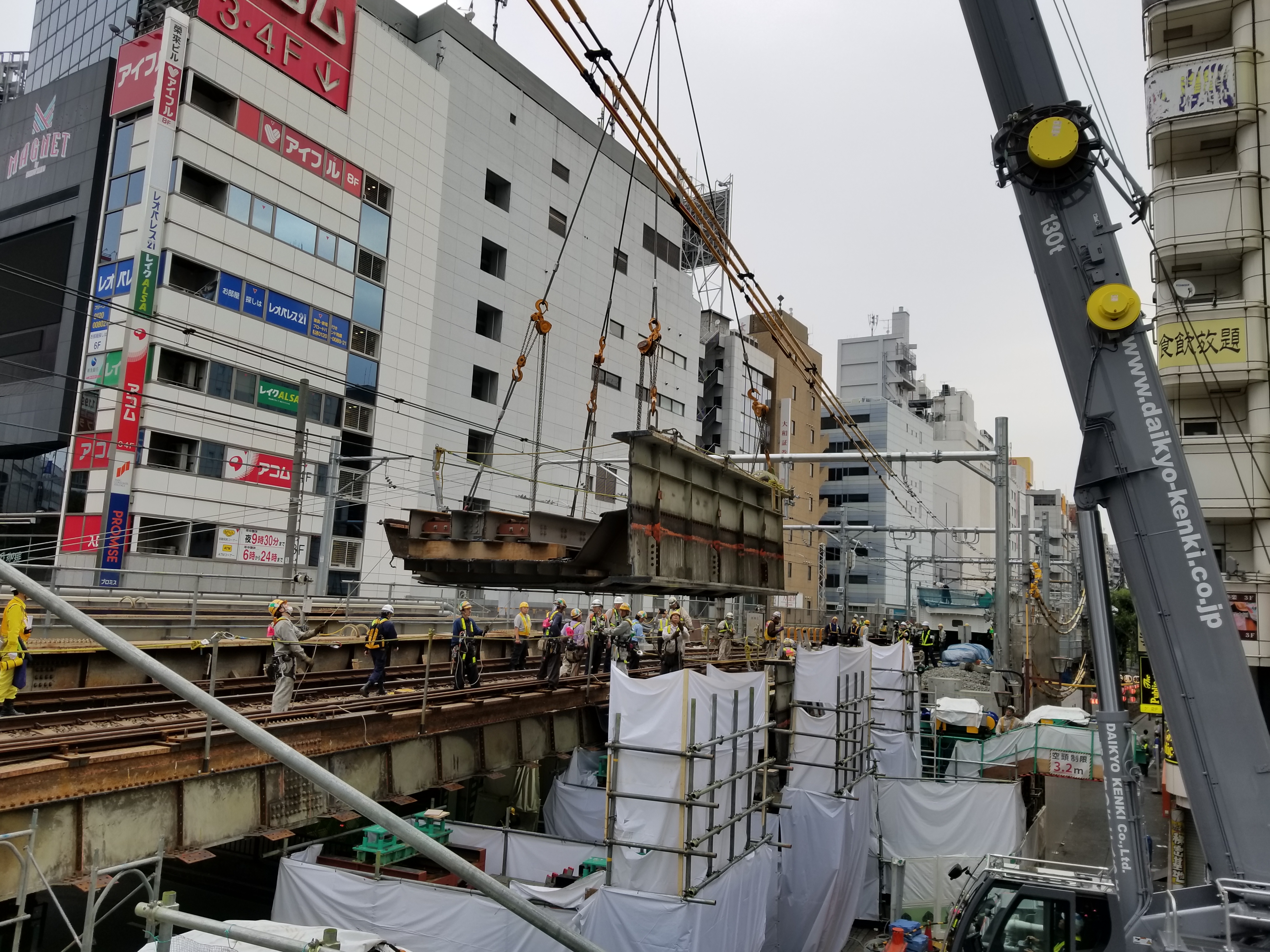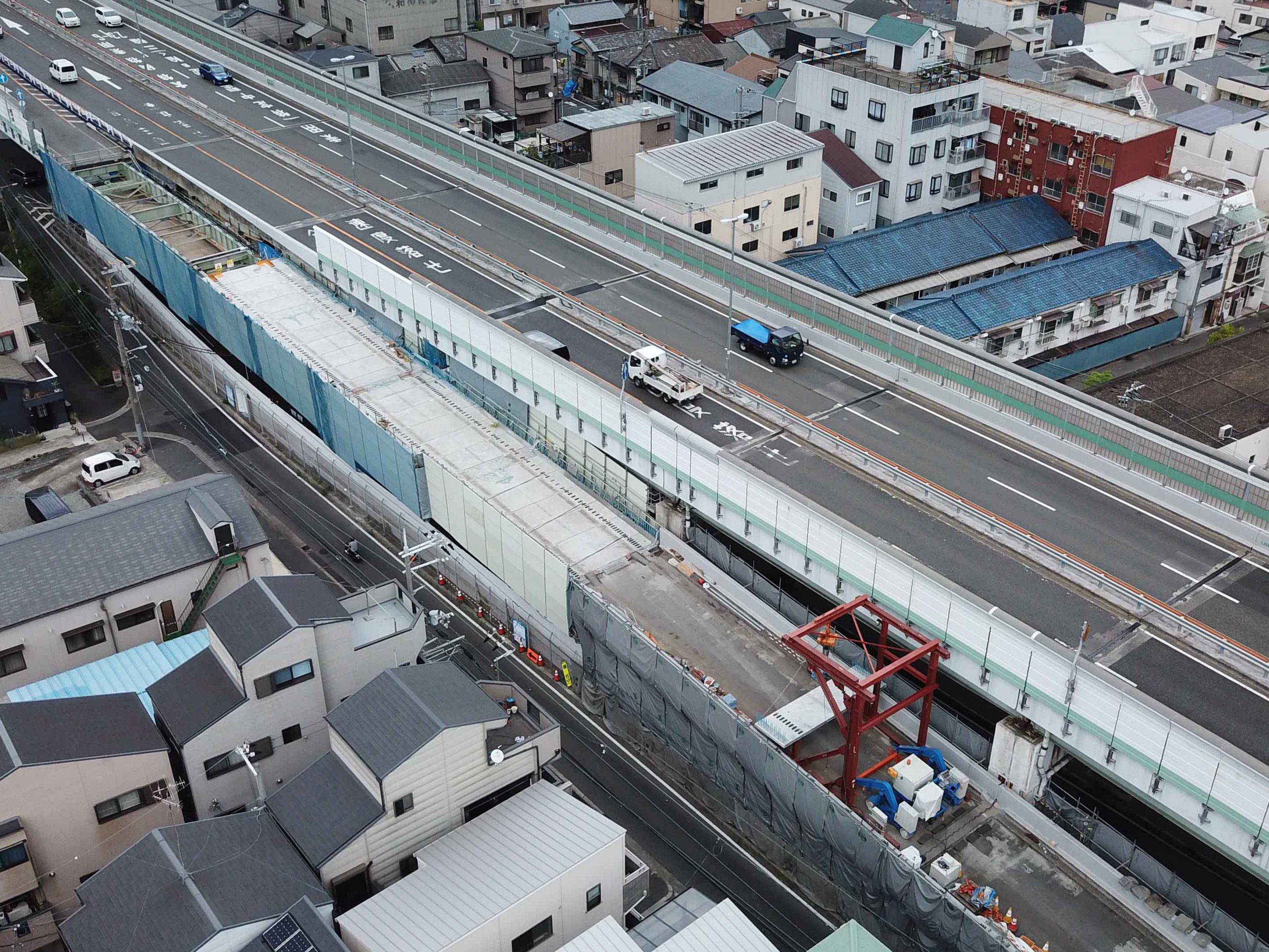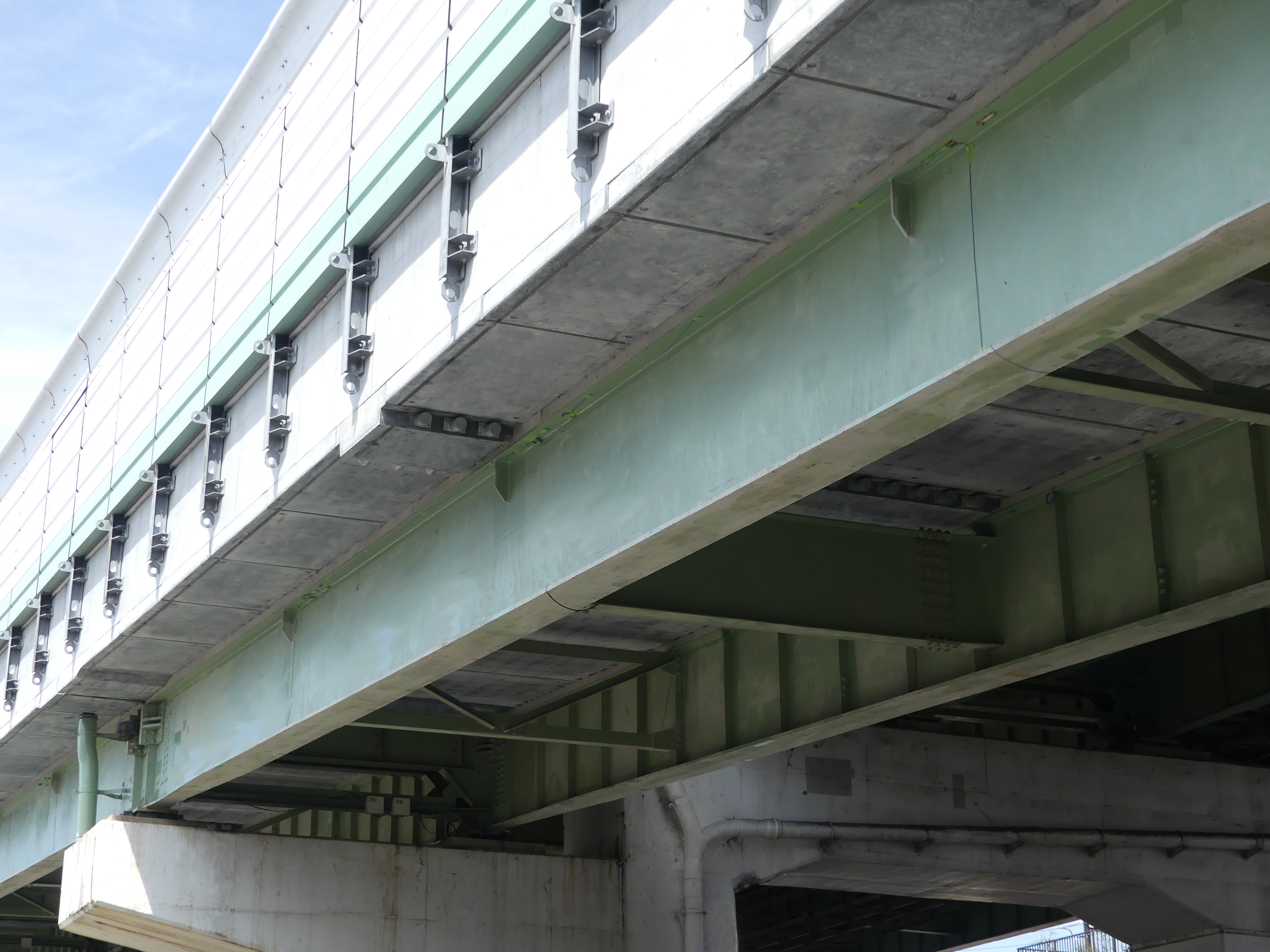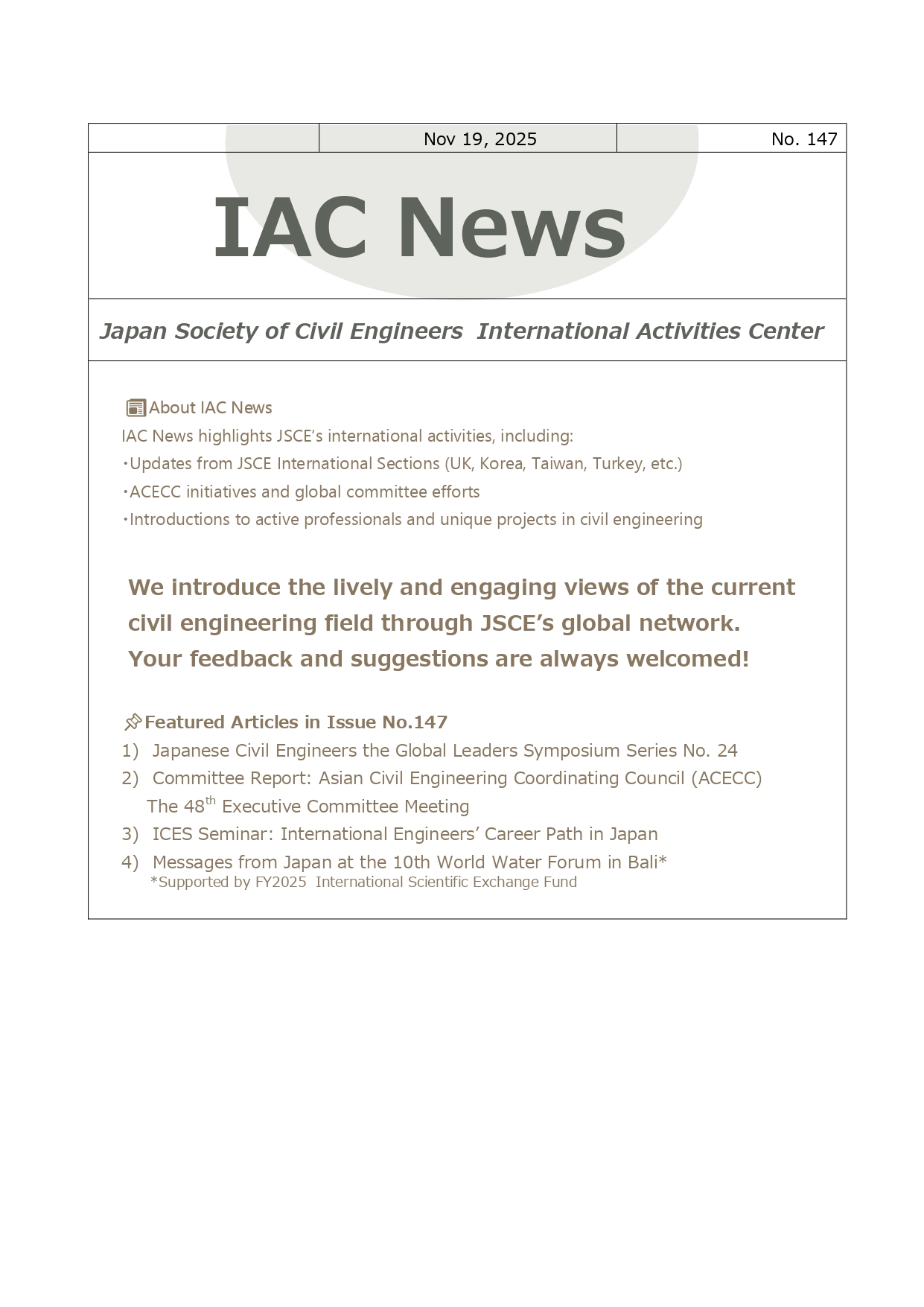2018 Tanaka Awards
1. IKUNO BRIDGE
- West Nippon Expressway Company Limited. Kansai Branch
- Taisei Corporation - P. S. Mitsubishi Construction Co., Ltd. JV
- Japan Bridge & Structure institute, Inc.
- Tekken Corporation
Ikuno Bridge, located on Shin-Meishin Expressway, is a 7-span continuous prestressed-concrete bridge including extradosed bridge with corrugated steel webs. Since this bridge needs to span over the JR line diagonally, the center span length requires 188m. To reduce the construction duration, several new construction technologies were adopted. For example, a pier-head, constructed on the temporary stage simultaneously with the construction of the pier, was positioned on the pier using the temporary steel rails. Furthermore, a pair of giant form-travellers was used to construct the longer segments of the extradosed bridge. This bridge is selected one of the Tanaka awards 2018 due to the accomplishment of short term construction using new technologies and the contribution to the bridge technology.
2. TENRYUKYO BRIDGE
- Ministry of Land Infrastructure and Transport, Chubu Regional Development Bureau, Iida National Highway Office
- Pacific Consultants Co., Ltd.
- Kawada Industries, Inc.
- The Takigami Steel Construction Co., Ltd.
- Kinoshita Construction
- Kumashiro Kensetsu Co., Ltd.
- Yahagi Construction Co., Ltd.
Tenryukyo bridge is a deck steel arch bridge with a arch span 210m. This bridge is located in the Tenryu Gorge, the scenery of protected by the Law for the Protection of Cultural Properties. To modestly harmonize with the bridge’s location, a flat arch shape was employed. This bridge has Unique shape consisting of curved stiffening girders and basket-handle arch ribs. This bridge was constructed using the best of bridge technology, and it can contribute significantly to the development of bridge technology, and deserves the Japan Society of Civil Engineers Tanaka award.
3. TSUKIJI BRIDGE
- Tokyo Metropolitan Bureau of Construction
- NIPPON ENGINEERING CONSULTANTS CO.,LTD.
- IHI Infrastructure Systems Co., Ltd.
- KAWADA INDUSTRIES, INC.
- JFE Engineering Corporation
- Hitachi Zosen Corporation
- Oriental Shiraishi Corporation
- TAISEI CORPORATION
- AOKI MARINE CO.,LTD.
Tsukiji bridge is a 3 span half-through steel arch bridge with arch span 145m. This bridge is located the furthest downstream of Sumida river, and it was planned to be in harmony with the Sumida River historic Bridges. This bridge has Unique shape consisting of inclined arch ribs. This bridge was constructed using the best of bridge technology, and it can contribute significantly to the development of bridge technology, and deserves the Japan Society of Civil Engineers Tanaka award.
4. TENJYO BRIDGE
- Kumamoto Prefecture
- NIPPON ENGINEERING CONSULTANTS CO.,LTD.
- Yokogawa Bridge Corporation
- NIPPON P.S. CO.,LTD.
- Yoshida Gumi Co.,LTD.
- JFE Engineering Corporation
- Yoshinaga Industry Ltd.
- Nakamura Kensetsu Co.,LTD.
- Nakauchi doboku Co.,LTD.
Tenjyo Bridge is a half-through composite arch bridge with the longest solid rib arch span length 350m in Japan. This bridge was planned to harmonize with the old Tenmon Bridge taken into consideration as much as possible. PC rigid frame bridge was adopted in side span for stability of arch ribs. The stiffening girder was erected using lifting erection method by deck barge while arch ribs were suspended by erection equipment. This bridge was constructed using the best of bridge technology, and it can contribute significantly to the development of bridge technology, and deserves the Japan Society of Civil Engineers Tanaka award.
5. REHABILITATION OF BOSPHORUS BRIDGES
- The Turkish General Directorate of Highways
- Parsons Transportation Group Inc.
- HI Infrastructure Systems Co., Ltd.
The First and Second Bosphorus Bridges are suspension bridges built in Istanbul, Turkey. Since some cable and hanger damages were confirmed in the bridges, large scale rehabilitation works were carried out. The works included specialized task of replacing the inclined hangers of The First Bosphorus Bridge with vertical hangers. This bridge was constructed using the best of bridge technology, and it can contribute significantly to the development of bridge technology, and deserves the Japan Society of Civil Engineers Tanaka award.
6. The Road Bridge Renovation between Itabashi JCT and Kumanocho JCT
- Metropolitan Expressway Co., Ltd.
The elevated expressway of approximately 520m between Itabashi JCT and Kumanocho JCT which crossover Central Circular route (C2) and Route No.5 is double deck structure with tennis racket shaped piers. Since this section had a merge and diverge in a short distance with chronical heavy congestion, it was renovated from three lanes to four lanes in each of upper and lower deck by broadening racket piers. This renovation project of increasing lanes in double deck without road closure is the first trial in Japan, which will contribute to a future development of renovation projects in road bridges.
7. Miyamasu Overroad Bridge Rebuild (Saikyo-Nobori Line)
- East Japan Railway Company
- KAJIMA-SHIMIZU Construction Joint Venture
- KAWADA Industries, Inc.
- KOMAIHALTEC Inc.
- JR East Consultants Company
- Japan Transportation Consultants, Inc.
The Miyamusu Overroad Bridge is a steel floor plate girder through bridge. Due to create a space to parallelize the Saikyo Line and the Yamanote Line platforms, they carried out rebuild work. Two main beams out of the three were left for the Saikyo-Kudari Line bridge, and the new bridge with two main beams in the adjacent space were constructed by expanding the abutment. This work had problems such as "no yard for construction", "weight reduction of girder" and "time constraints are severe". The yard was made by removing a building, and the transportation from the yard to site was developed a special Mobile Trolley. In addition, replaced a structure that did not require ballast removal work in advance, and overcome the problem. Construction under severe circumstances is considered to contribute to the future development of the bridge technology and deserves the Japan Society of Civil Engineers Tanaka award.
8. WIDENING METHOD FOR URBAN EXPRESSWAY (NISHI-SEMBA JUNCTION)
- Hanshin Expressway Company Limited
- CHUO FUKKEN CONSULTANTS CO.,LTD.
- SHIMIZU CORPORATION
- Yokogawa Bridge Corporation
The viaduct project for the Nishi-Senba Junction is under operation to directly connect the east-bound road along the Osakako route No.16 to the north-bound road along the Loop route No.1. The new girders for widening were rigidly connected to old girders by some new technology including multiple steel pipes pier integrated by pile foundation, replacing method for damaged cross beam of pier, and high strength countersunk head bolts. This bridge was constructed using the best of bridge technology, and it can contribute significantly to the development of bridge technology, and deserves the Japan Society of Civil Engineers Tanaka award.
9. Dry air injection system for suspension bridge cables
- Honshu-Shikoku Bridge Expressway Company Limited
- NIPPON STEEL ENGINEERING CO., LTD.
- Kobe Steel, Ltd.
- Bridge Engineering Co., Ltd.
Since main cables are the most important members of suspension bridges and cannot be replaced easily, adequate anti-corrosion measure is required. Therefore, dry air injection system for suspension bridge cables, which has superior anti-corrosion performance than the existing methods, was developed. The system suppresses corrosion development by making cable surfaces air tight and sending dry air from which salt particles are removed into cable. The system was installed in the Akashi Kaikyo Bridge as the first case in the world (November 1997) and its effectiveness was confirmed by the survey conducted in December 2018, about 20 years after the installation. Currently, the system is installed in all ten suspension bridges of the Honshu-Shikoku Bridges and five major domestic suspension bridges such as the Rainbow Bridge. And in foreign countries, the system is spreading such as the one for the Great Belt East Bridge. The system greatly contributed to the improvement of the bridge maintenance technology and deserves to the Japan Society of Civil Engineers Tanaka award.
10. Flat UHPFRC Deck Slabs to Replace Deteriorated Concrete Slabs
- Hanshin Expressway Company Limited
- Kajima Corporation
Flat Ultra-High Performance Fiber Reinforced Concrete (UHPFRC) deck slabs, which show remarkable fatigue durability, have been developed to replace highway bridge slabs that have deteriorated. These newly developed slabs were applied to Tamade rampway bridges for the first time in Japan. The durability of these slabs has been further improved by applying longitudinal pre-stress along the slab from end to end. Since these UHPFRC slabs are lighter than the original slabs, the steel girders require minimal strengthening. These precast panels were erected within the breadth of the rampway using a unique lightweight machine. This combination of technologies assuredly contributes to the renewal of deck slabs along aging urban highway bridges in congested areas, and thoroughly deserves the Japan Society of Civil Engineer’s Tanaka Award.

